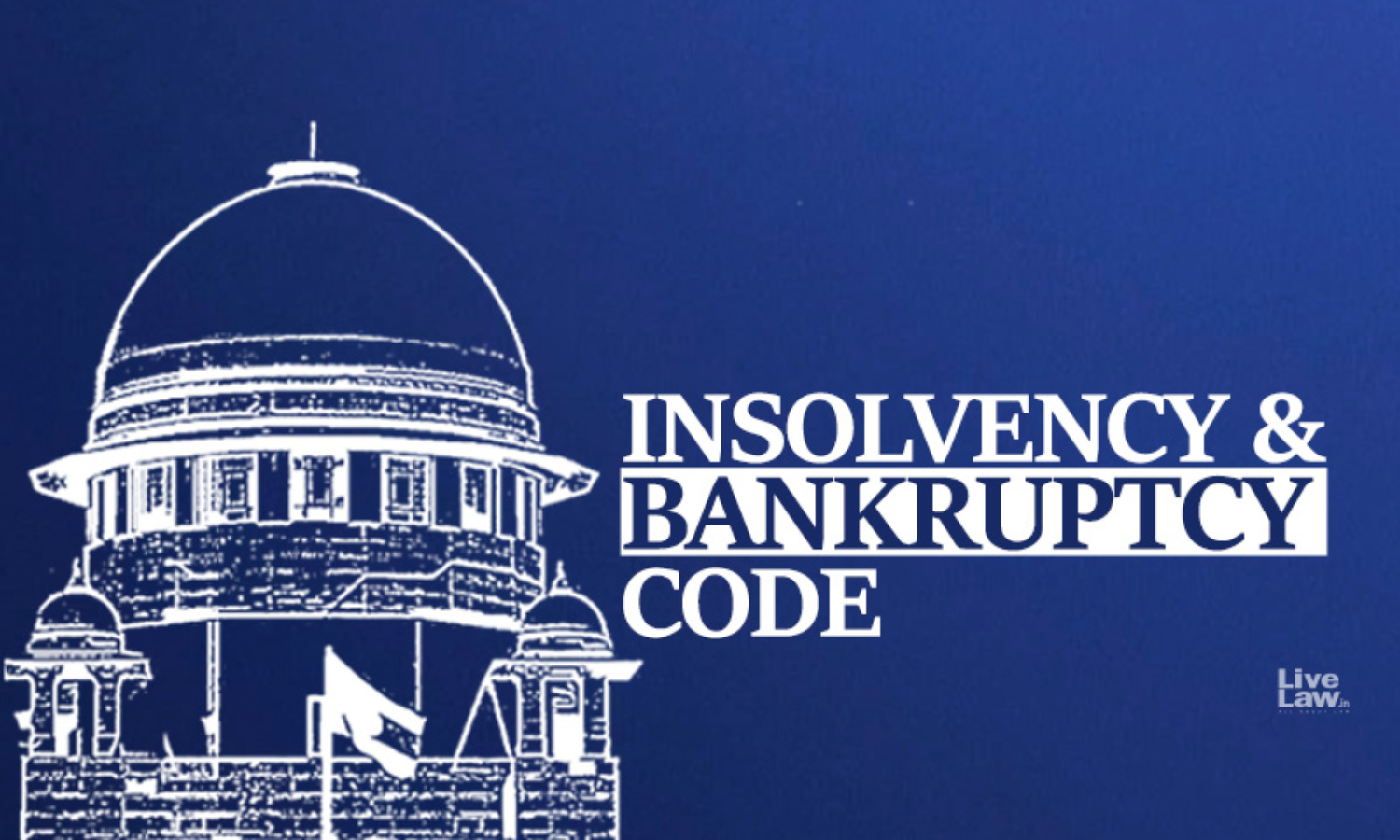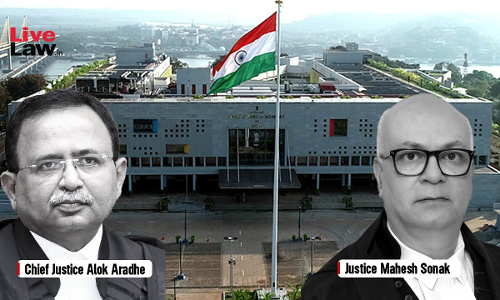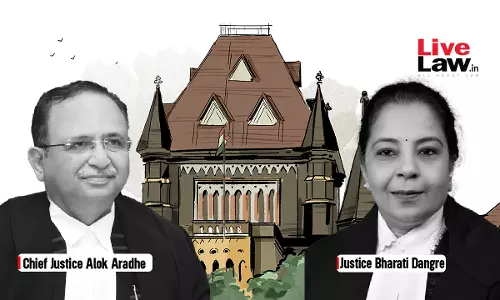Majority Homebuyers Accept Builder's Settlement During CIRP; Supreme Court Allows Withdrawal Of Insolvency Application

The Supreme Court has allowed withdrawal of Corporate Insolvency Resolution Process against a builder in an application filed by three homebuyers in view of a settlement plan agreed upon by the majority of them. In the larger interest of the homebuyers, the Apex Court exercised power under Article 142 to permit withdrawal of the CIRP proceedings and set aside all matters pending between...
The Supreme Court has allowed withdrawal of Corporate Insolvency Resolution Process against a builder in an application filed by three homebuyers in view of a settlement plan agreed upon by the majority of them. In the larger interest of the homebuyers, the Apex Court exercised power under Article 142 to permit withdrawal of the CIRP proceedings and set aside all matters pending between the parties.
While allowing the application, a Bench comprising Justices M.R. Shah and B.V. Nagarathna reserved liberty in favour of the homebuyers and Krrish Provence Flat Buyers Association ("Association") to approach it, in case the settlement does not go through as per the proposal. The Court also directed the promoters of the builder to pay Rs.6,00,000/- to the IRP along with litigation costs.
Factual Background
The builder, Jasmine Buildmart Pvt. Ltd., (corporate debtor), came up with a housing project in Gurgaon, namely, 'Krrish Provence Estate', which it could not complete in eight years. On 06.12.2018, three home buyers (original applicants) filed an application under Section 7 of the Insolvency and Bankruptcy Code, 2016 ("IBC") before the NCLT, Delhi seeking initiation of the CIRP process. The application was admitted on 28.11.2019. A Resolution Professional was appointed and moratorium was declared. The promoters of Jasmine challenged the admission of Section 7 application before NCLAT, which was eventually dismissed and CIRP was directed to be initiated. Accordingly, the Committee of Creditors (CoC) was constituted on 23.11.2020. In the interim, the promoters filed a Special Leave Petition (SLP) before the Apex Court challenging the order passed by the NCLAT. On 03.12.2020, notice was issued in the SLP and the operation of the NCLAT order was stayed.
Settlement
On 04.02.2022, the Supreme Court was informed that the respective parties including the three original applicants and 79 other home buyers have reached a settlement. According to which, the builder ought to complete the project and handover possession within a year. It had also resolved to refund Rs.3,36,02,000 as demanded by the three original applicants along with interest. The Supreme Court passed an order recording the settlement and permitting the homebuyers to withdraw the CIRP proceedings.
Subsequently, an application under Article 142 of the Constitution of India read with Rules 11 and 12 of the NCLT Rules, 2016 was filed by the original applicants before the Apex Court seeking permission to withdraw the CIRP proceedings on being paid Rs. 3,36,02,000 along with interest, out of the amount deposited with the Registry of the Court.
Senior Advocates, Mr. K.V. Vishwanathan and Mr. Nakul Diwan appearing for the office bearers of the Association and the Association respectively; Senior Advocate, Mr. Kapil Sibal appearing for the promoters submitted that the parties have settled the dispute and a proposed settlement plan signed by the parties has been filed under which the builder is to complete the project within one year from the date of settlement. The Court was apprised that out of 128 home buyers of 176 units, 82 (including the three original applicants) have accepted the settlement plan. It was submitted that the CIRP process was stayed at the very threshold and therefore there would be no impediment in allowing the original applicants to withdraw the CIRP proceedings.
Decision of the Supreme Court
The Court observed that under Section 12A, IBC, NCLT may allow withdrawal of the application admitted under Section 7 on an application filed by the applicant with approval of 90% voting share of CoC. It took note of Swiss Ribbons Pvt. Ltd. And Anr. v. Union of India And Ors. (2019) 4 SCC 17, wherein it had permitted the original applicants to withdraw the CIRP proceedings in view of the settlement entered between parties. In the present case, though CoC was constituted on 23.11.2020 there was a stay on its operation from 3.12.2020 and moreover, no meeting of CoC had yet been convened. The Court highlighted that 70% of the 91 members of the CoC were homebuyers and were willing to withdraw the CIRP proceedings. In view of the larger interest of home buyers the Supreme Court decided to permit the application to withdraw CIRP in exercise of Article 142.
"Therefore, in the peculiar facts and circumstances of the case, where out of 128 home buyers, 82 home buyers will get the possession within a period of one year, as undertaken by the appellant and respondent No.4 – Corporate Debtor, coupled with the fact that original applicants have also settled the dispute with the appellant/Corporate Debtor, we are of the opinion that this is a fit case to exercise the powers under Article 142 of the Constitution of India read with Rule 11 of the NCLT rules, 2016 and to permit the original applicants to withdraw the CIRP proceedings. We are of the opinion that the same shall be in the larger interest of the home buyers who are waiting for the possession since more than eight years."
It further observed -
"If the original applicants and the majority of the home buyers are not permitted to close the CIRP proceedings, it would have a drastic consequence on the home buyers of real estate project. If the CIRP proceedings are continued, there would be a moratorium under Section 14 of the IBC and there would be stay of all pending proceedings and which would bar institution of fresh proceedings against the builder, including proceedings by home buyers for compensation due to delayed possession or refund. If the CIRP is successfully completed, the home buyers like all other creditors are subjected to the pay outs provided in the resolution plan approved by the COC.
"Most often, resolution plans provide for high percentage of haircuts in the claims, thereby significantly reducing the claims of creditors. Unlike other financial creditors like banks and financial institutions, the effect of such haircuts in claims for refund or delayed possession may be harsh and unjust on homebuyers.
On the other hand, if the CIRP fails, then the builder-company has to go into liquidation as per Section 33 of the IBC. The homebuyers being unsecured creditors of the builder company stand to lose all their monies that are either hard earned and saved or borrowed at high rate of interest, for no fault of theirs."
The Court also noted that the object and purpose of the IBC was not to kill a company but to ensure that it can run as a going concern. It also took note of the 2019 Amendment to the IBC which increased the threshold limit for homebuyers to initiate CIRP.
"Even the legislative intent behind the amendments to the IBC is to secure, protect and balance the interests of all home buyers. The interest of home buyers is protected by restricting their ability to initiate CIRP against the builder only if 100 or 10% of the total allottees choose to do so, all the same conferring upon them the status of a financial creditors to enable them to participate in the COC in a representative capacity. Being alive to the problem of a single home buyer derailing the entire project by filing an insolvency application under Section 7 of the IBC, the legislature has introduced the threshold of at least 100 home buyers or 10% of the total home buyers of the same project to jointly file an application under Section 7 of the IBC for commencement of CIRP against the builder company."
Case Name: Amit Katyal v. Meera Ahuja And Ors.
Citation: 2022 LiveLaw (SC) 259
Case No. and Date: Civil Appeal No 3778 of 2020 | 03 Mar 2022
Corum: Justices M.R. Shah and B.V. Nagarathna
Authored By: Justice M.R. Shah
[Senior Advocate, Mr. Kapil Sibal for promoters; Advocate, Mr. Lokesh Bhola for original applicants; Senior Advocate, Mr. K.V. Vishwanathan for impleaders; Senior Advocate, Mr. Nakul Diwan for Association; Advocate, Mr. Yogesh Mittal for Resolution Professional and Advocate, Ms. Radhika Gupta for the intervenors]
Headnotes
Section 12A of the Insolvency and Bankruptcy Code, 2016 - inserted by the Insolvency and Bankruptcy (Second Amendment) Act, 2018 - retrospective effect from 06.06.2018 - Allows withdrawal of application admitted under Section 7 or Section 9 or Section 10, on an application made by the applicant with the approval of 90% voting share of the Committee of Creditors - Rationale behind Section 12A is contained in Paragraph 29.1 of the Insolvency Law Commission Report - Procedure for preferring application under Section 12A is under Regulation 30A of the CIRP Regulations, 2016 - Brilliant Alloys Pvt. Ltd. v. S. Rajagopal provision is held to be directory defending on fact of case.
Section 12A of the Insolvency and Bankruptcy Code, 2016- As held in Swiss Ribbons Pvt. Ltd. And Anr. v. Union of India And Ors. - at any stage before a COC is constituted, a party can approach NCLT/Adjudicating Authority directly and the Tribunal may in exercise of its powers under Rule 11 of the NCLT Rules, allow or disallow an application for withdrawal or settlement - in an appropriate case and where the case is being made out and the NCLT is satisfied about the settlement, may permit/allow an application for withdrawal or settlement.
Rule 11 of NCLT Rules 2016 - permits withdrawal of the CIRP proceedings initiated by the original applicants by application under Section 12A of the Code.
In exercise of Article 142 of the Constitution of India - As agreed, respondent Nos. 1 to 3 shall be paid an amount of Rs.3,36,02,000/- along with accrued interest, out of the amount deposited by the appellant, pursuant to the earlier order passed by this Court dated 3.12.2020 - Respondent Nos. 1 to 3 herein (original applicants before the Adjudicating Authority) are permitted to withdraw the application filed by them under Section 7 of the IBC, 2016 bearing CP No. 1722/ND/2018 pending before the NCLT, New Delhi. Hence, CP No. 1722/ND/2018 pending before the NCLT, New Delhi stands dismissed as withdrawn - Consequently, all matters between the parties quashed and set aside.




